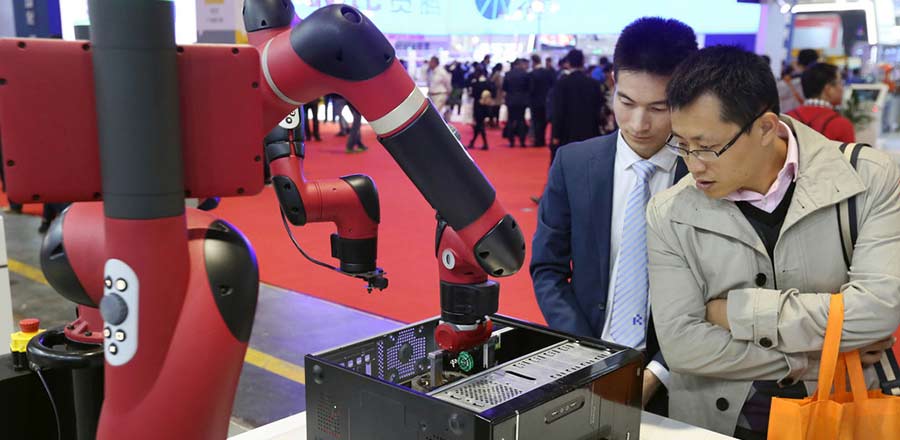
"Feeling that extreme lightness brings a strong emotional connection," explains Jiang. "It's so fine, literally like an eggshell."
The same concept makes its way into her carbon fiber chairs. Weighing just 2.7 kilograms and withstanding up to 200 kg of pressure, the designs come in cool epoxy finishes, and in a shape that is distinctly from the Ming Dynasty (1368-1644).
Such chairs were traditionally made in heavy woods, which "would have had a thickness of 2 centimeters, but here are 8 mm," says Jiang.
Christie's Lenain was on hand to bring in the collector's angle.
Only in the past few years has contemporary Chinese design started to appeal to international collectors and museums. But it's been a steep learning curve.
"We started from scratch," says Lenain. "In the West, the concept of design has been there forever - people don't even think about it. But in China it was completely new."
Foreign competition was another factor.
Since the early 2000s Western brands have been fervently marketing their products to Chinese customers, making it even harder for local designers to have a voice.
In 2014, Christie's Hong Kong held its first Chinese Contemporary Design sale, which initially toured New York and Europe, and the overseas response was robust.
"We had Shang Xia's carbon fiber chairs in Rockefeller Center," recalls Lenain.
"People did not believe it was 100 percent made in China - that the idea, materials and construction were Chinese."
The enthusiasm translated into sales too, with all lots sold.
"We have been brainwashed by the Western press for the past 30 years," says Jiang.
"That the term 'made in China' means poor quality or counterfeits. But there is a new trend. There is a side of China that has creativity, design originality, quality and excellence in craftsmanship."








